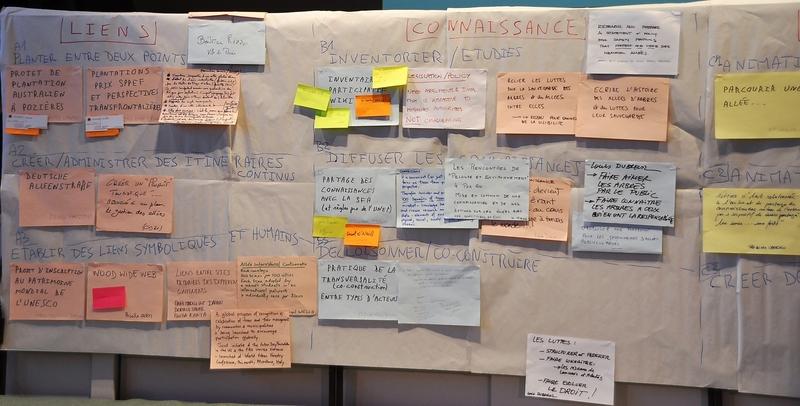Tree avenues
The French term ‘allée’ is used in many parts of Europe when referring to tree-lined ‘ways of passage’ in parks and gardens, in towns or in the country. In the context of landscapes, ‘avenue’ has the same meaning in English. ‘Avenues’ (or ‘tree avenues’) are thus ‘ways of passage’—paths, streets, and roads, but also canals—lined with rows of regularly spaced trees.
Avenues (in this sense) constitute an important cultural, natural, and landscape heritage in France, Europe, and beyond.
To know more about tree avenues, go to the "Quiz" and to the "Tree avenues and road safety" pages.
Our objectives
♦ To foster knowledge about the cultural, natural, and landscape heritage that avenues represent ♦ Through information and education, to raise the awareness of the general public and professionals about the values of avenues ♦ To showcase the heritage of tree avenues and associated best practice ♦ To promote the economic activities and jobs avenues create ♦ To protect and renew existing avenues, and to develop new ones ♦ To support initiatives and protagonists helping to preserve tree avenues ♦
Our actions
ALLÉES-AVENUES /allées d'avenir/ (avenues of the future) acts at a local, a national and an international level. All actions, which are of different natures, will contribute to the future project of a European cultural route.
Actions of scientific nature:
Actions of technical nature:
- National meetings
- ‘Mémento’ (a guidebook in French about the protection of tree avenues)
- a Collaborative platform open to participants of the national meetings
Actions of artistic nature:
- Artistic Observatory
- Exhibition of the Observatory's artworks
Advocacy actions:
- ‘Carcassonne Declaration’
- Support for external actors
- Publications
![]()


![]()
News
News
-
Exposition Wayne Gudmundson et le...22 Apr, 2025 in NewsVenez rencontrer Wayne Gudmundson ce samedi 26 avril à Trampot. Après sa résidenc...
-
La BD est sortie !22 Apr, 2025 in News160 pages avec de très beaux dessins d'allées - Mathieu Flammarion les aime et a un vra...
-
Road safety: No, the trees are no...11 Mar, 2025 in News"Should the plane trees along the roadsides be cut down?" The question has once again re...
-
Des dates à retenir31 Jan, 2025 in NewsAvec nos voeux, notre première lettre d'information de l'année, c'est aussi l'appel à reno...
-
-
-
Observatoire artistique de l'allé...05 Jul, 2024 in NewsLa saison 2024 de l'Observatoire artistique de l'allée de frênes de Trampot s'est achevé...
-
Concert et performance artistique...10 Jun, 2024 in NewsDimanche 23 juin 2024, 14h30 - 17h30 : performance artistique de Constance Fulda - 15h...
-
Le point sur nos actions - Mai 20...13 May, 2024 in NewsLes suites du colloque international, la Haute-Marne et ses allées, l'Observatoire artis...
-
Les arbres des allées ne sont pas...12 Apr, 2024 in NewsVoir dans les arbres un problème de sécurité routière à résoudre est bel et bien dépassé. ...
-
-





